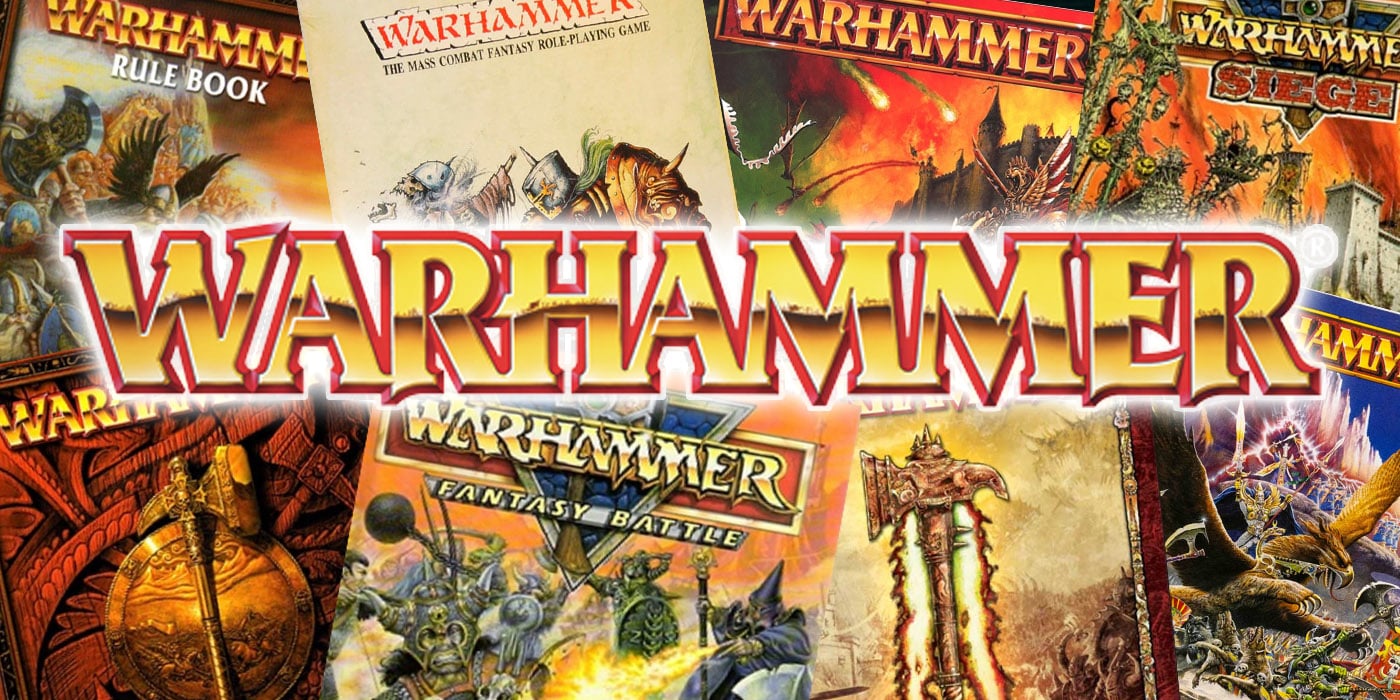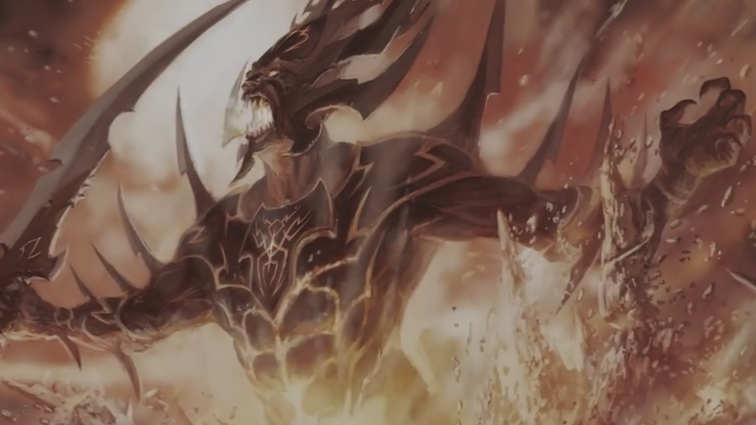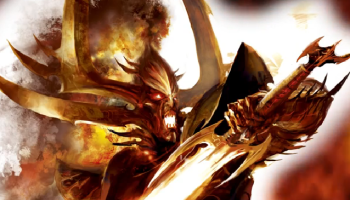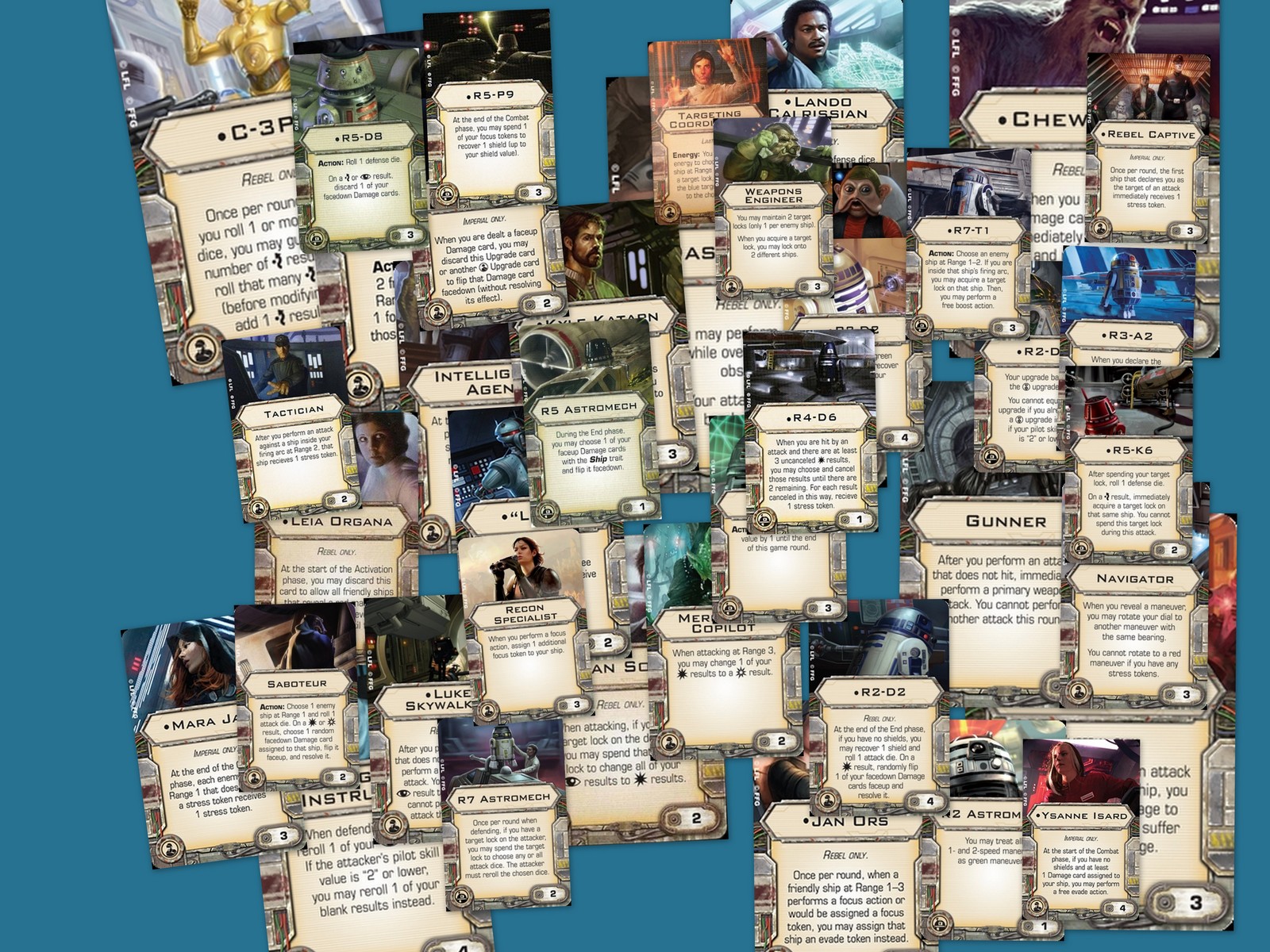End Times Armies of Khaine



Greetings my fellow blood-slicked elves and welcome to the first segment of my two-part End Times: Khaine review!
The Warhammer world will never be the same and this is most definitely true of the Elves more than any other race in the setting, their fractured history coming full circle and playing host to countless tragedies – the fate of Tyrion in particular to transition from the greatest living elven hero to its’ darkest enemy is truly heart-breaking even if you care nothing for the Asur’s plight. While I do not wish to cover the new End Times Magic rules just yet as I feel I need significantly more play-tests to get a good feel of such a drastic evolution of a core game mechanic, I am ready to share my thoughts on the Elf-specific changes offered by End Times: Khaine. Please be aware that I will cover the updated character profiles in a second article; with that said, I hope you enjoy this article!
End Times: Khaine Army Special Rules
Martial and Murderous Prowess
While these two special rules haven’t strictly changed individually, what is noteworthy is that certain Elf units can now benefit from the other or even both, depending on which of the three End Times: Khaine army lists they are a part of. Martial Prowess is now the domain of the Host of the Phoenix King, while the Aestyrion draw from the strength of Murderous Prowess; if you instead elect to use the Host of the Eternity King, all units gain both Martial and Murderous Prowess if they already possessed either special rule. Generally speaking the rule to each prowess is that Martial benefits units that would usually fight in three or more ranks more – mostly infantry – while Murderous is superior for everything else, especially characters.
While Dreadlords are still superior to Princes because they have access to Sea Dragon Cloaks and can now gain passive benefit from an allied High Elf Banner Bearer or Battle Standard Bearer with the Banner of the World Dragon, Murderous Prowess nonetheless provides all High Elf characters with a significant buff to their melee damage capabilities. On the other hand, Dark Elf infantry have all received ridiculous buffs that serve to make them even more under-priced for what they are capable of; Witch Elves, Executioners and Black Guard are now among the premier infantry choices in the game for raw damage output per point spent. There is virtually no reason to take High Elf or Dark Elf Spearmen over Black Ark Corsairs now while White Lions and Sword Masters receive some very handy damage boosts in melee – heck, why would you ever bother with High Elf Archers now that Darkshards have Martial Prowess as well!
Still, I think what really needs to be addressed is what happens to Wood Elves under the new army lists – particularly the Host of the Eternity King. In their own army book, Wood Elves benefited from both Martial and Murderous Prowess but at the price of only being able to use them while remaining within a forest. Now, they receive both sets of Prowess full-stop regardless of whether they are inside a forest or not; basically, they no longer need to camp on their free forest to get the most out of their units and can instead freely fight across the board without sacrificing any of their abilities. What it basically means is that Eternal Guard are hands down the best spear-wielding Elves around what with paying a mere 2 points per model for Leadership 9, Stubborn and Armour Piercing, even at the sacrifice of a point of armour. This also unfortunately means that the Cauldron of Blood (in an Eternity King list) can be used to benefit Glade Guard with Trueflight Arrows as well as the usual Repeater Crossbowmen, making for possibly the most insane gun-line in the game before one even considers the potential to include eight bolt throwers in a standard list (four from Dark Elf Special, four from High Elf Rare).
Hatred of Elves and Valour of Ages
This particular pair of special rules has always been very situational, providing benefits to Dark Elves and High Elves respectively against each other. In a smart move, the rules designers behind End Times: Khaine moved to change these so that they apply when fighting against any Elf army, whether it be one of the standard army books or any of the three army lists introduced by this latest entry in the End Times series. Providing Dark Elves with Hatred against all Elf factions is a pretty neat buff that only solidifies their position as the best melee combatants among the Asrai, Asur and Druchii, whereas High Elves will benefit from a superior form of Immune to Psychology that lacks any drawbacks against a much wider number of rival forces. The buffs to these two special rules may be minor but considering how so many players now feature an Elf force of some kind and many other newcomers are likely to adopt one of the three End Times: Khaine lists, the changes are most certainly welcome.
The Aestyrion
Of the three special character rosters available to Elf players in End Times: Khaine, I feel the Aestyrion sits at the bottom end due to a smaller roster compared to the Host of the Phoenix King, while the Eternity King list features empowered profiles for Malekith and Alarielle in addition to numerous other special characters that otherwise do not feature in End Times: Khaine. The theme of the list is that all units benefit from Murderous Prowess as opposed to Martial Prowess while the Aestyrion also exclusively feature all of the Khainite units including Witch Elves, Cauldrons of Blood, Death Hags and Har Ganeth Executioners. While I’ve generally found Martial Prowess to be superior overall to Murderous Prowess – unless a Cauldron of Blood is employed – the Aestyrion features the best melee units of either list and thus gains the most benefit from their own “Prowess” as a result.
That many Dark Elf units including War Hydras, Kharibdyss’, Doomfire Warlocks and Sisters of Slaughter are exclusive to the Aestyrion helps to make up for the inclusion of many Wood Elf units in the Host of the Phoenix King. There’s no denying the Host of the Phoenix King wins on sheer versatility, but once the two forces clash in a melee the Aestyrion generally come out on top with access to Witch Elves and Har Ganeth Executioners, while they also have the most broken unit in Doomfire Warlocks – though obviously Sisters of the Thorn are rather insane themselves. The Aestyrion units are generally geared towards raw damage output over survivability, something the Phoenix King list does very well with access to Phoenix Guard and Frostheart Phoenixes. On even terms, the Aestyrion wins in a fight but chuck in a Frostheart Phoenix or the numerous expanded support options and the Phoenix King list will generally reign supreme. The good news for Aestyrion players is that Tyrion as the Avatar of Khaine is virtually unstoppable against a Host of the Phoenix King, beating the more expensive Malekith in a one-on-one fight more often than not as well as annihilating almost any unit that gets in his way.
Morathi is second only to Teclis as far as insane spellcasters are concerned with her +D3 to casting all spells on top of being a Level 4 that knows all of the spells from Dark Magic, Death Magic and Shadow Magic while being extremely hard to both catch and kill. Still, the question on everyone’s mind is whether or not the Aestyrion is a good reason for Khainite players to purchase End Times: Khaine if they want to field Tyrion as the Avatar of Khaine or otherwise benefit from mixed units and some cool new rules. The sad truth is that unless you actively want to field Tyrion, Morathi or Korhil, there is virtually no reason to take the Aestyrion over the superior Host of the Eternity King – the latter list removes a few potentially unwanted special characters, gives your units even more free buffs and provides access to a tonne of new units. As a dedicated Khainite player myself this was somewhat of a disappointment, especially as Tyrion is a cavalry model whereas every single actual Khainite unit is Movement 5. He just doesn’t really fit into the list unless you put him with a Doomfire Warlock bus, though losing the Fast Cavalry rules just to act as a bodyguard to Tyrion might not be to everyone’s liking – even if the unit will be absolutely terrifying.
The Host of the Phoenix King
While this may come as a surprise to many, I think the Host of the Phoenix King may actually pop up a bit regardless of the presence of the Host of the Eternity King for just one reason; Teclis, the High Loremaster. As we are all no doubt aware presently, all wizards now know all spells from any spell lore they generate or choose spells from. Teclis was generally considered a good but not great choice with the ability to either be a Loremaster of High Magic or, more importantly, choose a single spell from each of the eight rulebook spell lores. Now, take that latter ability and apply the new End Times Magic rules to it and we may just have the game’s most powerful wizard, short only of perhaps Nagash himself that is more than twice as expensive as the tragic twin. Knowing all six spells from each of the eight rulebook lores in addition to their respective signature spells, End Times spells and Cataclysm spells where applicable is ridiculous; in a standard game of Warhammer Fantasy, Teclis is a Level 5 Wizard that knows a whopping sixty-four spells.
While a Loremaster of Hoeth and a Slaan with the Wandering Deliberations discipline are equivalent in that regard, neither are natively Level 5 Wizards with the ability to both ignore miscasts and re-roll all failed casting attempts in any single magic phase of their choice. Teclis is simply ludicrous in the new rules as he will always have something to cast regardless of whether he rolls poorly on the D6 roll when determining how many dice he can use on a given spell. Malekith as the Phoenix King and Alarielle as the Avatar of Isha are both powerful choices but ultimately pale in comparison to their “boosted” profiles featured in the Host of the Eternity King, while featuring Martial Prowess as opposed to Murderous Prowess makes for some interesting choices with respect to army building, particularly where Black Guard and Phoenix Guard are concerned. That the list features numerous Wood Elf units (whereas the Aestyrion has none) as well as a good chunk of exclusive High Elf and Dark Elf units, most notable among them being Frostheart Phoenixes, makes it the better overall army list with regards to shooting, magic and defence, though obviously it can’t compare to the Aestyrion in a straight melee for the most part.
The Host of the Eternity King
The Eternity King list will most likely evolve into the default army list for Elf players using End Times: Khaine seeing as there are no restrictions and the passive buffs are more significant here than for the Aestyrion or Host of the Phoenix King. The other two army lists are designed for themed games before the final events of End Times: Khaine and their rules and restrictions reflect that, though for general competitive gaming the ability to take all Elf units minus some special characters in the one list as well as benefiting from both Martial and Murderous Prowess (or more, if the units in question are Wood Elves) makes for an overly powerful army list. Even if a player chooses not to use units from the other army books but instead keep their own “one-book list” at the sacrifice of any removed special characters, the fact that they either now benefit from a second “M(x) Prowess” – or, in the case of Wood Elves, benefit from both regardless of whether they are in a forest or not – gives these units some crazy buffs.
Black Guard now have an identity of their own next to Phoenix Guard by providing more attacks when used in identical formations and being more efficient with Eternal Hatred and Immune to Psychology as well as Stubborn, though obviously Phoenix Guard remain the premier anvil choice with their unit-wide 4+ ward saves. Witch Elves and Executioners were already powerful enough without fighting in an extra rank, whereas White Lions and Swordmasters of Hoeth are far more reliable in a combat with re-rolls of 1s to wound. Heck, that any Elf unit with a Prowess can benefit from the Cauldron of Blood is reason enough to love this change; re-rolling to wound with Armour Piercing Trueflight Arrows in the dozens sounds just fine to me!
Now that all units – barring some special characters – from each of the three varying Elf factions have been combined in a single army list, players are free to cherry pick whichever unit is the best overall choice in their given role. The best ranged Core units are undeniably Darkshards and Glade Guard, while melee Core options tend to suit Witch Elves for raw damage output and Black Ark Corsairs or Eternal Guard as an anvil. Dark Riders remain the best Core Fast Cavalry choice available to any of the three lists, while Warlocks, Sisters of the Thorn and Wild Riders are all virtually auto-includes with the new End Times Magic rules and the last ones’ insane combat capabilities. Executioners are your raw damage-dealers with Killing Blow as far as great-weapon wielders are concerned, though White Lions are probably the best overall with their Lion Pelts and Stubborn at just a point more per model. Cold One Knights favour destruction just as Dragon Princes are ever so slightly more survivable, while being able to compliment a cavalry-centric list with both Silver Helms and Dark Riders in Core is absurd in every way imaginable.
As far as monsters are concerned, Frostheart Phoenixes remain the pick of the bunch – especially with the new 4D6 Winds of Magic rolls that practically guarantee the Phoenix gets a positive boost from its’ Attuned to Magic special rule – with Treemen and Kharibdyss’ also being solid picks, the former for its survivability and the latter for its’ superior monster-hunting capabilities and low cost. Whether or not you wish to use High Magic or Dark Magic will sway your decision on whether to use a Sorceresses or Mages of the Hero and Lord choice categories, though Wood Elf Spellsingers and Supreme Spellsingers have access to both “Elf lores” and get a nifty bonus to cast in a forest to boot. Of course, the Loremaster of Hoeth is easily the gem of the Lord choice spellcasters in the new End Times rules seeing as he knows all of the spells from each of the eight rulebook lores, including their associated signature and End Times spells. The option to give the Loremaster magic armour in addition to the other usual defensive items as well as having a combat profile in keeping with a Master or Noble makes him the best overall wizard available to each of the three Elf books.
For combat characters, Dark Elf Dreadlords and Masters remain the pick of the bunch with their access to Fast Cavalry mounts and Sea Dragon Cloaks; that they can now benefit from the Banner of the World Dragon allows you to put out a Strength 7 Lord choice with a 1+ armour save, re-rolling failures and a 2+ ward save against anything magical. Yikes! Dark Elves also have the better of the flying combat characters options with Dark Pegasi, Sea Dragon Cloaks and the Cloak of Twilight making them far more survivable and damaging than their High Elf and Wood Elf counter-parts. With regards to special characters, the combinations one can pull are insane; a pure monster-mash list with any number of Treemen Ancients, Durthu, Malekith, Imrik, War Hydras, Treemen, Kharibdyss’, Flamespyre Phoenixes and Frostheart Phoenixes is sure to give even the Lizardmen equivalent a run for its’ money. Malekith and Imrik are each capable of utterly annihilating any model in the game in a round of close combat, with Malekith also being a ridiculously powerful wizard with some insane special rules that make him almost impossible to kill outside of a few very specific counters.
Alarielle as the Incarnate of Life may as well be an auto-include as she provides Regeneration 4+ to all nearby friendly Elf units – War Hydras, Witch Elves and Black Guard, anyone? – while herself being an exceptional wizard that can destroy enemy monsters with ease in a close combat so long as they hail from the Forces of Destruction. The Host of the Eternity King when viewed as a whole allows for power-builds the likes of which none of the other combined-force End Times lists are capable of, providing the game with its most powerful characters and mixing units that were never meant to fight alongside each other – just wait until you see what happens when Witch Elves with the Razor Standard perform a combo-charge with a Frostheart Phoenix. Heck, even just giving Frostheart Phoenixes to Dark Elves and Wood Elves is crazy enough as it is given that those armies are typically more fragile but far more damaging than their High Elf counterparts, with Black Guard, Witch Elves, Executioners and Wild Riders in particular possessing fragility but insane melee damage output. I can’t wait to see what crazy army lists and combos Elf players can come up with; even if some of them may be absolutely broken or over-powered, at least it will present new and interesting challenges for me and other open-minded gamers.
Thank you very much for reading my latest End Times focused article! While I am heavily disappointed that Elves didn’t receive any new units or models – unless you count the returning character, Imrik – I nonetheless am pleased with this release as the background and Khaine-oriented content is greatly appreciated from the perspective of this particular Khainite player. I am eager to hear your thoughts on the new End Times Magic rules presented in this newest entry to the Warhammer Fantasy equivalent of the Apocalypse; if you have any feedback or critiques for me, please leave them in the comments section below.
Have yourselves a lovely day and stay tuned for the second part of my End Times: Khaine review!







